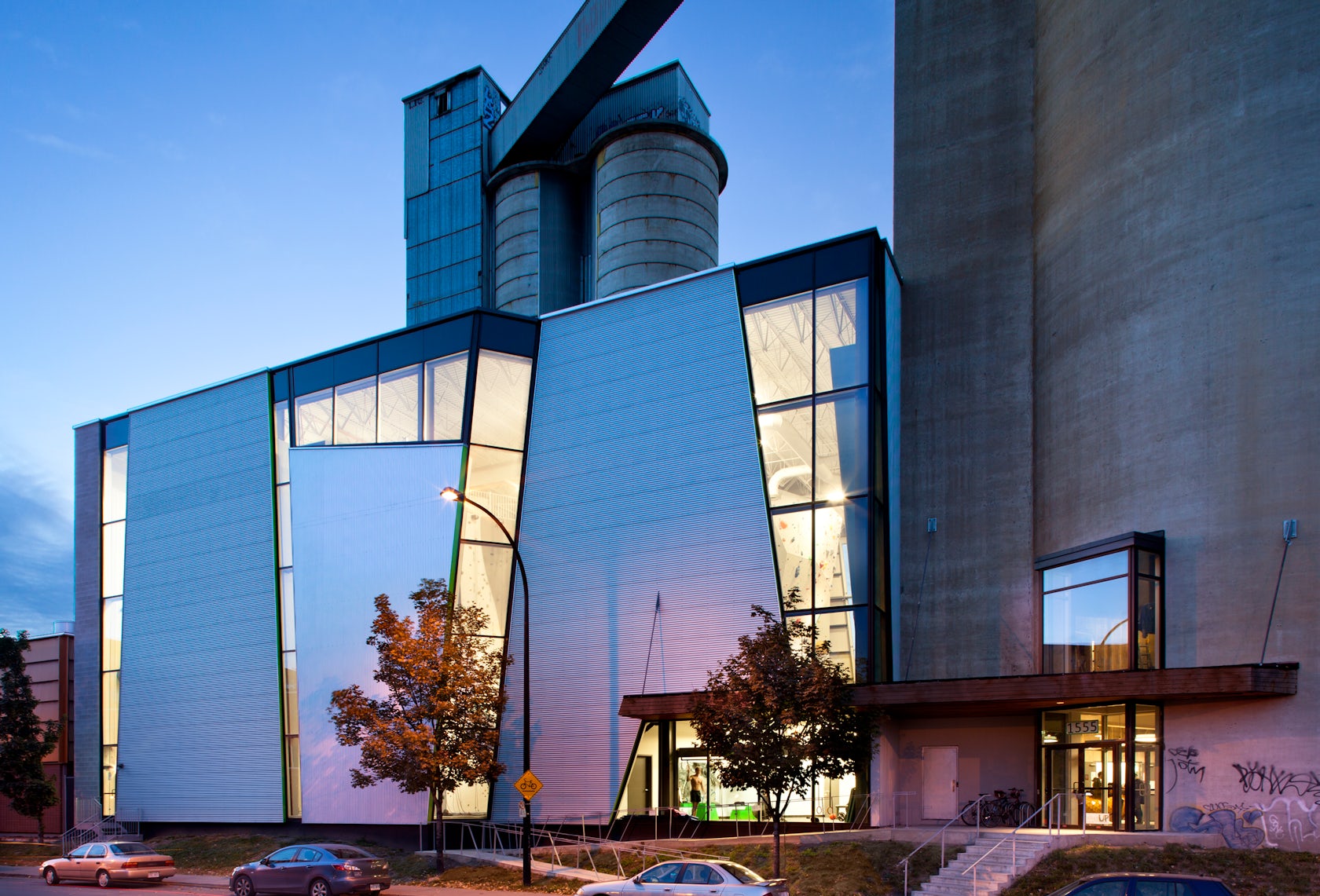Architizer's 13th A+Awards features a suite of sustainability-focused categories recognizing designers that are building a greener industry — and a better future. Start your entry to receive global recognition for your work!
Buzz surrounding indoor rock climbing has followed the same growth trajectory as that of many other urban-sport activities: rapid and exponential. One day you had never heard of it and the next, you were getting knocked by climbing shoes on the subway, as they vivaciously swung from carabiners on knapsacks. Indoor rock climbing has propelled to the forefront of urban fitness because by providing avenues for health, excitement and socializing, it combines some of our most central desires. The sheer size and specificity of these indoor climbing facilities demonstrate that thousands of people are flocking towards these gyms and that it is hardly a marginal affair.
Among all the huzzah, it is fascinating to consider how indoor rock climbing commodifies the natural landscape. By erecting walls that certainly do not exist in the wilderness, these spaces privatize an otherwise outdoor experience, and enclose it with fees and costs. However for some people, these buildings make climbing more accessible by bringing it much closer to home. Bouldering specifically, is praised for being cheaper and more practical than any other form of climbing since it does not require nearly as much gear.
These vast and impressive spaces border virtual reality, possessing aspects of both game and theme park. They act to sanction curiosity and playful interactions among adults — something that is not always easy to come by. Through evoking imagery of mountainscapes, rock and crystal, these buildings visually mimic the environments that they are intended to emulate. While these mountainscapes are surely artificial and safeguarded from the elements, like the outdoors, these spaces act as sanctioned havens for curious adventure seekers.

© Robert Reck Photography

© Edward Fitzgerald / Architects

© Kaethe Richter
Stone Age Climbing Gym by Edward Fitzgerald / Architects, Albuquerque, United States
The Stone Age Climbing Gym is a 24,000-square-foot facility that includes world class lead wall and top rope climbing, bouldering and additional exercise spaces. The abstract geometry of this project results in the potential for challenging and stimulating climbing courses.

© Ed Wonsek

© Ed Wonsek

© Ed Wonsek
Brooklyn Boulders – Chicago by Arrowstreet, Chicago, United States
Arrowstreet seeks to create places where people live, work, learn and have fun. Thus, it is fitting that they have worked closely with Brooklyn Boulders on their expansion. Brooklyn Boulders forwards unconventional fitness platforms by bringing together art, music, cultural and entrepreneurial communities. This space demonstrates that indoor climbing is a hybrid: as much about community as it is about fitness.

© Lanz + Mutschlechner

© Lanz + Mutschlechner

© Lanz + Mutschlechner
Verticale Indoor Rock Climbing Hall by Lanz + Mutschlechner, Bressanone, Italy
Verticale Indoor Rock Climbing Hall incorporates its surrounding landscape through a massive glass façade, blurring the line between what is natural and artificial. This creates a dynamic relationship between what exists outside and what rests inside.

© Smith Vigeant Architects

© Smith Vigeant Architects

© Smith Vigeant Architects
Allez Up Rock Climbing Gym by Smith Vigeant Architects, Montréal, Canada
This project is at the heart of the revitalization of Montreal’s Southwest borough. Built in abandoned silos, Allez Up Rock Climbing Gym maximizes the enormous potential of a historic vestige from Montreal’s industrial past.

© Cino Zucchi Architetti, Park Associati

© Cino Zucchi Architetti, Park Associati

© Cino Zucchi Architetti, Park Associati
Salewa Spa Headquarters by PARK ASSOCIATI and Cino Zucchi Architetti, Via Waltraud-Gedert-Deeg
This project aims to converge various elements of everyday life, from physical, social and communicative dimensions to work, style and leisure. Additionally, the building’s aluminum and glass skin creates the visual effect of a cubic rock, shielding the activity that occurs within.

© Ed Wonsek

© Ed Wonsek

© Ed Wonsek
Brooklyn Boulders – Somerville by Arrowstreet, Somerville, United States
Brooklyn Boulders – Somerville is uniquely designed to create a community where physicality stimulates innovation. The key goal of this project was to facilitate social interaction among climbing enthusiasts.

© Reiulf Ramstad Arkitekter

© Reiulf Ramstad Arkitekter

© Reiulf Ramstad Arkitekter
Norwegian Mountaineering Center by Reiulf Ramstad Architects, Åndalsnes, Norway
The Norwegian Mountaineering Center was designed and created to evoke the dramatic experience of climbing and summiting. The project’s towering geometric expression communicates the activity that is executed inside.




